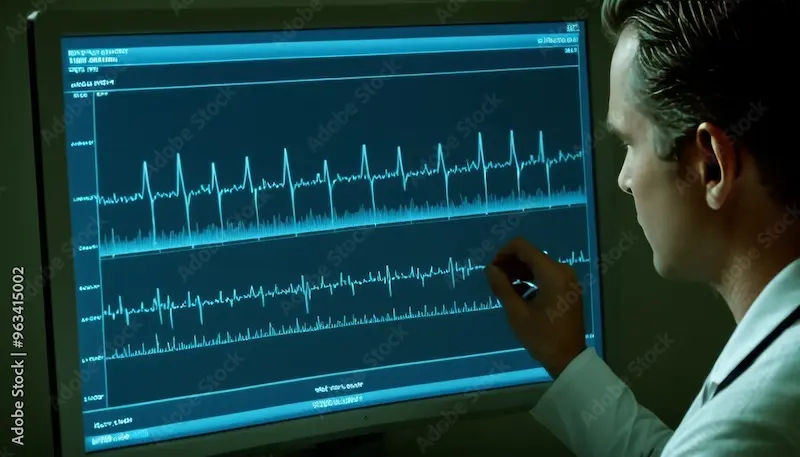Treadmill Test: Understanding Normal Ranges and Procedure
Learn about the Treadmill Test, its normal ranges, and procedure, along with tips on preparation, when to consider the test, and expert advice for maintaining a healthy heart.


Introduction
If your doctor has recommended a treadmill test, you might be wondering what it is, why it’s needed, and what the results mean. Don’t worry; this guide will explain everything in simple terms so you can feel confident and prepared.
What is a Treadmill Test?
A treadmill test, also known as a stress test or exercise stress test, helps doctors check how well your heart works during physical activity. Since exercise makes your heart pump harder, this test can detect problems that might not show up when you’re at rest.
Consult a Cardiologist for the best advice
Why is it Done?
Your doctor may suggest a treadmill test to:
- Check for signs of coronary artery disease (blocked heart arteries).
- Evaluate heart rhythm problems (arrhythmias).
- Determine safe exercise levels if you have a heart condition.
- Assess symptoms like chest pain, shortness of breath, or dizziness during exertion.
- Monitor heart function after a heart attack or surgery.
How is the Treadmill Test Performed?
The test is simple and usually takes about 30-60 minutes. Here’s what happens:
Before the Test
- Avoid heavy meals, caffeine, or smoking 2-3 hours before the test.
- Wear comfortable clothes and shoes suitable for walking or running.
- Inform your doctor about any medications you take.
During the Test
- Electrodes (sticky patches) are placed on your chest to monitor your heart’s electrical activity (ECG).
- A blood pressure cuff is attached to track your BP during exercise.
- You’ll start walking on a treadmill at a slow pace, which gradually increases in speed and incline.
- Your heart rate, breathing, and symptoms (like chest pain or fatigue) are closely observed.
- The test continues until you reach a target heart rate or experience discomfort.
After the Test
- You’ll cool down slowly while your heart rate returns to normal.
- The doctor will review your ECG and BP readings to assess heart function.
What Are Normal Results?
A normal treadmill test means:
- Your heart rate and blood pressure respond appropriately to exercise.
- No significant ECG changes (like abnormal heart rhythms or signs of poor blood flow).
- No chest pain or breathing difficulties during the test.
Abnormal Results May Indicate:
- Reduced blood flow to the heart (ischemia) – Possible blocked arteries.
- Irregular heartbeats (arrhythmias) – May need further evaluation.
- High or low blood pressure responses – Could signal heart or circulation issues.
If your results are abnormal, your doctor may recommend additional tests like an echocardiogram, angiogram, or CT scan.
How to Prepare for the Test?
To get the most accurate results:
- Follow your doctor’s instructions about medications (some may need to be paused).
- Stay hydrated but avoid caffeine or heavy meals before the test.
- Wear comfortable workout clothes and shoes.
- Inform the doctor if you feel unwell before the test.
Is the Treadmill Test Safe?
Yes, it’s generally safe when performed under medical supervision. Rare risks include:
- Dizziness or fainting
- Irregular heart rhythms
- Very rarely, a heart attack (extremely uncommon)
Trained staff monitor you closely, and the test is stopped if any concerns arise.
When Should You Consider a Treadmill Test?
You may need this test if you have:
- Unexplained chest pain or discomfort
- Shortness of breath during exertion
- A history of heart disease
- Risk factors like diabetes, high BP, or high cholesterol
- An irregular heartbeat
Next Steps After the Test
If your results are normal, your doctor may still advise lifestyle changes if you have risk factors. If abnormal, further tests or treatments (like medications, stents, or bypass surgery) may be recommended.
Tips for a Healthy Heart
Keep your heart strong and healthy by making smart lifestyle choices that support long-term cardiovascular wellness.
- Exercise regularly (walking, swimming, cycling).
- Eat a heart-healthy diet (fruits, vegetables, whole grains, lean proteins).
- Quit smoking and limit alcohol.
- Manage stress with yoga, meditation, or deep breathing.
- Monitor blood pressure, cholesterol, and diabetes.
Final Thoughts
A treadmill test is a simple, non-invasive way to check your heart’s health. Knowing what to expect can ease any anxiety, and if issues are found, early detection means better treatment. Always follow your doctor’s advice and take steps to keep your heart strong!
Consult a Cardiologist for the best advice
Consult a Cardiologist for the best advice

Dr. S B Bhattacharyya
Cardiologist
22 Years • MBBS, MD(General Medicine),DM (Cardiology)
Kolkata
Gariaheart Clinic, Kolkata

Dr. Mangesh Danej
Cardiologist
8 Years • MBBS, MD (General Medicine), DNB (Cardiology)
Pune
Dr Danej clinic, Pune
(375+ Patients)
Dr. Kapil Challawar
Cardiologist
7 Years • MD, DM (Cardiology)
Guwahati
Apollo Excel Care Hospita, Guwahati, Guwahati

Dr. M Sudhakar Rao
Cardiologist
8 Years • MBBS, MD General Medicine, DM Cardiology
Bengaluru
UMC, Kormangla, Bengaluru

Dr Yogendra Singh Rajput
Cardiologist
16 Years • MBBS, MD (General Madicine), DM (Cardiology)
Gurugram
Svasthya Child & Cardiac Care, Gurugram
Consult a Cardiologist for the best advice

Dr. S B Bhattacharyya
Cardiologist
22 Years • MBBS, MD(General Medicine),DM (Cardiology)
Kolkata
Gariaheart Clinic, Kolkata

Dr. Mangesh Danej
Cardiologist
8 Years • MBBS, MD (General Medicine), DNB (Cardiology)
Pune
Dr Danej clinic, Pune
(375+ Patients)
Dr. Kapil Challawar
Cardiologist
7 Years • MD, DM (Cardiology)
Guwahati
Apollo Excel Care Hospita, Guwahati, Guwahati

Dr. M Sudhakar Rao
Cardiologist
8 Years • MBBS, MD General Medicine, DM Cardiology
Bengaluru
UMC, Kormangla, Bengaluru

Dr Yogendra Singh Rajput
Cardiologist
16 Years • MBBS, MD (General Madicine), DM (Cardiology)
Gurugram
Svasthya Child & Cardiac Care, Gurugram


.webp)

